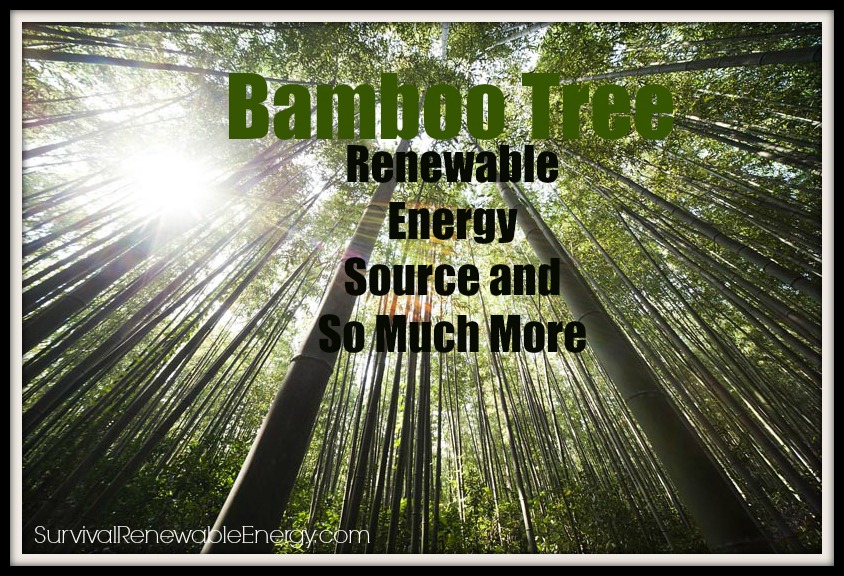Bamboo Tree as Renewable Energy Source
ENERGY, 1 Feb 2021
Ariel Bellamy | Earthava - TRANSCEND Media Service
Bamboo Tree: Renewable Energy Source and So Much More
21 Dec 2020 – Long time ago, some significant changes in temperatures, air quality, and the quality of life on Earth in general were discovered.Over the centuries, people had enormous effect on the planet,and the results are not good.
Pollution and global warming are just some of the problems that have occurred that have to be stopped immediately, or at least reduced. As people are trying to be more eco-friendly and save our planet from destruction, they started using different materials for clothing, furniture, heating,and one of the most popular plants used for these purposes is bamboo.If you wonder how come bamboo is so eco-friendly and in which ways you can use it to contribute to the “green movement”, here you can read more about it.
Why Bamboo?
Many people associate bamboo with panda food, and believe that it only grows in China. However,there are many types of bamboo that grow all over the world. The special thing about bamboo is that it can be used instead of wood, because it grows ten times faster, matures faster and therefore causes less damage to the environment.
Cutting bamboo
instead of trees will stop deforestation that over the years led to damaging the air quality. Another thing is that bamboo does not require pesticides and fertilizers to contribute to its growth, and the soil is not destroyed by its cultivation. Most importantly, it is a biodegradable material, so if you do have something made of it that you need to throw away, it will decompose much faster and will not cause much harm to the Earth.
Alternative Energy Source
Because of it biological and chemical composition, some species of bamboo like Gimsung and Tong have been harvested and used for generating electricity in Thailand. It also has a good CO2 absorption, which means two things: it contributes to the greater oxygen production and it is used to produce clean energy in biomass power plants. Finally, for some tribes in Africa, people use bamboo for cooking instead of firewood.
Clothes
Lately, famous designers, and fashion industry in general, have tried to be more green by using more eco-friendly material. First of all, they have incorporated organic cotton, and avoid using leather and fur in their collections. Another novelty is bamboo clothing, that as its name indicates refers to the clothing items which fabric has been made out of bamboo.
From underwear, shirts, towels to accessorizes, thanks to its versatility, this plant has worked its way up the fashion ladder quite quickly. The fact that it is as soft as cashmere, that it is antibacterial, antifungal and odor resistant made it one of the most popular fabrics nowadays.
Furniture
Bamboo has also become popular in furniture production and as a flooring material, as it is resistant to termites and other annoying pests. From tables, chairs, wardrobes and cabinets, bamboo can be incorporated in your whole household.
Another interesting fact about bamboo is that, even though it has a hollow structure, it is stronger than steel and that is why it can be used it in construction for support. Probably not many people realize all the advantages of the bamboo, so you need to be the one to incorporate it in your daily life, spread the word and save the planet.
________________________________________________
Ariel Bellamy is an open-minded blogger who takes care that her words are well written, sharply witty, and unconditionally true. She focuses on all things green – in a battle for Earth, and all things healthy – as in the battle for happiness.
Tags: Bamboo, Energy, Environment, Nature, Renewable Energy, Sustainable energy
DISCLAIMER: The statements, views and opinions expressed in pieces republished here are solely those of the authors and do not necessarily represent those of TMS. In accordance with title 17 U.S.C. section 107, this material is distributed without profit to those who have expressed a prior interest in receiving the included information for research and educational purposes. TMS has no affiliation whatsoever with the originator of this article nor is TMS endorsed or sponsored by the originator. “GO TO ORIGINAL” links are provided as a convenience to our readers and allow for verification of authenticity. However, as originating pages are often updated by their originating host sites, the versions posted may not match the versions our readers view when clicking the “GO TO ORIGINAL” links. This site contains copyrighted material the use of which has not always been specifically authorized by the copyright owner. We are making such material available in our efforts to advance understanding of environmental, political, human rights, economic, democracy, scientific, and social justice issues, etc. We believe this constitutes a ‘fair use’ of any such copyrighted material as provided for in section 107 of the US Copyright Law. In accordance with Title 17 U.S.C. Section 107, the material on this site is distributed without profit to those who have expressed a prior interest in receiving the included information for research and educational purposes. For more information go to: http://www.law.cornell.edu/uscode/17/107.shtml. If you wish to use copyrighted material from this site for purposes of your own that go beyond ‘fair use’, you must obtain permission from the copyright owner.

